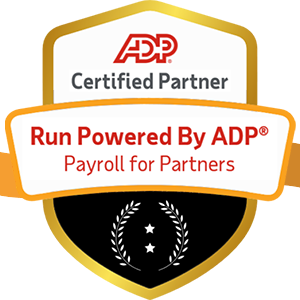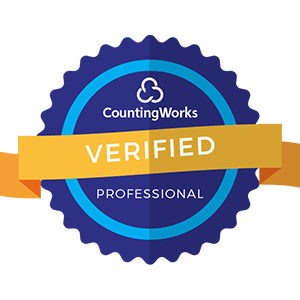
Just like maintaining your wellness routine, staying compliant with payroll laws requires consistency, attention to detail, and the right tools to make it sustainable.
---
In today's fast-paced business landscape, keeping up with constantly evolving labor laws and payroll regulations can feel like a never-ending game of whack-a-mole. Just when you think you have everything under control, a new law pops up that sends you scrambling to adjust your processes and avoid costly penalties.
Sound familiar? If so, you're not alone. Payroll compliance is a major challenge for businesses of all sizes. In fact, a recent survey found that 41% of small business owners consider payroll taxes and laws to be "very" or "extremely" burdensome. And it's no wonder why—with over 200 federal and state labor laws on the books, staying compliant is a complex and time-consuming task.
But what if there was a way to simplify payroll compliance and stay ahead of changing laws—without adding more to your already full plate? Enter payroll compliance automation.

In a nutshell, payroll compliance automation refers to using technology to streamline and automate the processes involved in ensuring your payroll practices adhere to all applicable laws and regulations. This can include tasks like:
By automating these routine yet critical payroll functions, businesses can save time, reduce errors, and minimize the risk of non-compliance. And in today's regulatory environment, that's more important than ever.
Before we dive into how automation can help solve your payroll compliance woes, let's take a step back and look at why compliance is so crucial in the first place.
Sure, avoiding fines and penalties is a big motivator. Non-compliance with payroll laws can result in steep financial consequences, with fines ranging from a few hundred to millions of dollars depending on the violation. In 2021 alone, the U.S. Department of Labor's Wage and Hour Division collected over $230 million in back wages for workers—a clear indicator that regulators are cracking down on payroll missteps.
But payroll compliance is about more than just dodging fines. It's also about doing right by your employees and protecting your business's reputation. When you fail to pay workers correctly or provide the benefits they're entitled to, it can lead to disgruntled employees, high turnover, and even legal action. On the flip side, maintaining payroll compliance demonstrates that you value your workforce and are committed to fair labor practices. In today's competitive hiring market, that can go a long way in attracting and retaining top talent.
Plus, non-compliance can be a major distraction from running and growing your business. Dealing with audits, investigations, and legal issues takes time and resources away from your core operations. By getting payroll right from the start, you can stay focused on what matters most.

Now that we've established why payroll compliance deserves a spot at the top of your priority list, let's look at some of the biggest challenges businesses face in staying on the right side of the law.
Labor laws are constantly evolving at both the federal and state levels. In 2022 alone, twenty-one states and 35 cities and counties raised their minimum wage rates. New paid leave laws are cropping up across the country, with four states adding or expanding their programs this year. And let's not forget about the ever-shifting landscape of employee classification, overtime rules, and payroll taxes.
Staying on top of these changes is a full-time job in itself. But for busy business owners and HR teams, carving out the time to research new laws and adjust payroll processes accordingly can feel like an impossible task.
For businesses with employees in multiple states, payroll compliance gets even trickier. Each state has its own set of labor laws and regulations, which means you need to stay on top of not just federal requirements, but also the specific rules for each state where you have workers.
This is especially challenging for businesses with remote or distributed workforces, as you may have employees scattered across the country (or even the globe). Ensuring compliance with the appropriate state and local laws for each employee's location is a complex undertaking.
Another common compliance pitfall is properly classifying employees. With the rise of the gig economy and more flexible work arrangements, the lines between employees and independent contractors are increasingly blurred. But misclassifying workers can lead to serious consequences, including back taxes, fines, and legal action.
To stay compliant, businesses need to carefully assess each worker's status based on factors like the degree of control over their work, the duration of the relationship, and the worker's opportunity for profit or loss. But making these determinations can be subjective and open to interpretation, leaving room for error.
Accurate timekeeping is the foundation of payroll compliance. If you're not properly tracking employee hours and overtime, you risk running afoul of wage and hour laws like the Fair Labor Standards Act (FLSA).
But manual timekeeping methods like paper timesheets are prone to errors and can be easily manipulated. And with more employees working remotely or on flexible schedules, getting a precise picture of time worked is harder than ever.
Finally, payroll compliance requires meticulous recordkeeping. Under federal law, employers must maintain detailed records of wages paid, hours worked, and other payroll-related information for at least three years. Some states have even longer retention requirements.
But keeping organized, accurate records is easier said than done. Physical paperwork can be lost or damaged, and manual data entry leaves room for human error. Plus, with the sheer volume of payroll data businesses generate, staying on top of recordkeeping can quickly eat up valuable time and resources.
With so many potential compliance pitfalls, it's clear that manual payroll processes are no longer sufficient in today's regulatory environment. That's where automation comes in.
By leveraging technology to streamline payroll tasks and keep pace with changing laws, businesses can take the guesswork and legwork out of compliance. Here's


